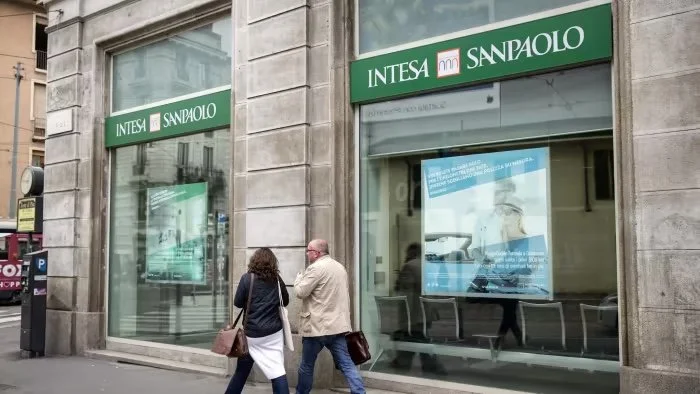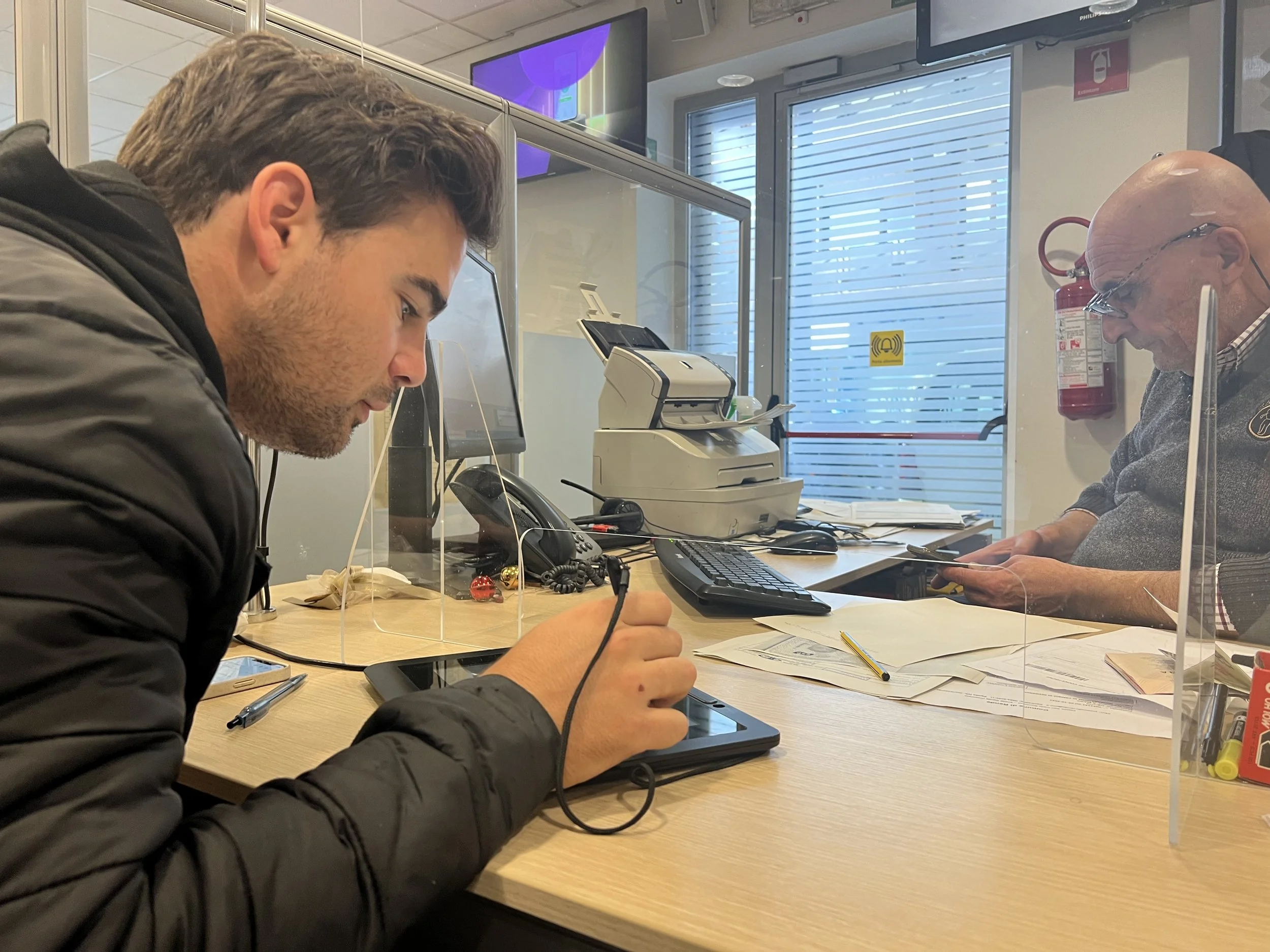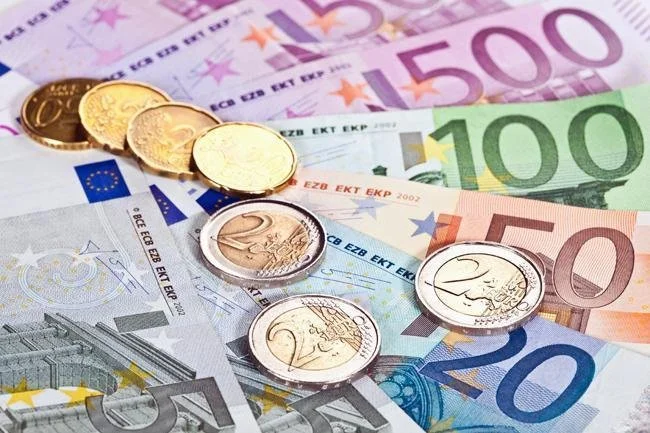Opening an Italian Bank Account
A history student was so enamored with Ancient Rome that he decided to become a Roman himself. His friends weren’t very supportive. They kept telling him to get with the Times… New Roman.
Once you’re an Italian citizen (or an expat), you’ll need to open an Italian bank account right away. Paying bills, sending wires, and receiving a salary becomes very difficult without one. The process wasn’t exactly clear to me when I went through this process, so I want to share what I’ve learned, so it might be easier for you when you’re ready.
In this post, I’m going to explain the following:
The requirements to open an account
The different types of accounts
The process for opening an account
Let’s get banking!
The requirements for opening an Italian bank account
The requirements are very straightforward, but it’s important to have plenty of information on hand in case you are asked for more details.
A valid identification document. This can be your carta d’identità or passport. If you don’t get have an Italian passport or carta d’identità, your American passport will pass.
Codice Fiscale. This is critical to have for any tasks related to finance in Italy, whether it is opening a bank account, starting a cell phone plan, or buying/renting property in Italy.
Proof of address. Some banks may require that you open an account in the zone where you live. You can still open an account outside of your area, but be prepared to answer why you are not opening an account in a branch close to your residence. You should also be prepared to show your lease or residency documents from the comune where you reside.
Proof of employment. Some banks will require that you deposit money immediately into an account upon opening it, so don’t be caught of guard if they do. Regardless, the bank will want to know where your funds are coming from. Since I didn’t have an Italian job, I provided my W2 (showing my name and social security number) to prove my income.
Types of Italian bank accounts
If you’re a citizen of Italy or a resident who spends more than 183 days per year in Italy, you have the following options:
Conto corrente. This is like a typical American checking account that you will use for every day transactions. You’ll receive a debit card and may have access to other banking services like Bancomat Pay (a Zelle-like bank-to-bank feature) and utility bill payment.
Conto corrente cointestato. This is a joint bank account. This is the account that I opened with my boyfriend so that we could split income and expenses in Italy and in Europe broadly. He is a Spanish citizen, but we were both required to show the same documentation. We are both named on the account and can take action on behalf of the account. We also both received debit cards.
Conto di risparmio. This is a savings account that will allow you to earn interest, although rates in Italy tend to be very low.
Conto di deposito. This is more like an American CD (certificate of deposit) account that allows you to earn higher rates than a conto di risparmio but comes with certain restrictions and penalties for early withdrawals.
If you’re not a citizen of Italy yet or are a resident who spends less than 183 days in Italy per year and you don’t have a permanent residence in Italy, the only option for you is a conto estero. This is a simplified version of a conto corrente.
How to open an Italian bank account
Choosing a bank is an important first step. Online banking features, geographical footprint, and fees are all important considerations when opening an account. In my experience Intesa Sanpaolo, BNL, or UniCredit are all excellent choices because they are large banks and offer a variety of services for citizens and expats. It’s critical to note any fees related to the account. Often times, there is a fee to receive your debit/credit card and other fees for account maintenance, money transfers, and withdrawals. Since these fees can vary widely from bank to bank, it’s important to consider how you will use the account when choosing which bank to stash your cash. My boyfriend and I chose Intesa Sanpaolo and even though the fees can be high for account maintenance and money transfer relative to US banks, the customer service has been great, the online banking functionality has been a breeze and very easy to use, and they offer a variety of banking services like investing, a digital banking card to use in our iPhone wallets for Apple Pay, and account analyses (very much like Mint or QuickBooks) so we can easily track our income and expenses.
While many banks have online banking, you’ll be hard pressed to be able to open an account online since the bank will be required to verify all your documents (detailed above) in person.
Italian work culture is known for an exceptional breed of work-life balance: extra long lunch breaks, odd hours, and personal relationships. Bank branches are no exception and typically have limited hours. Most banks are not open on weekends and are usually closed by 3 or 4 in the afternoon. That means you should plan to arrive early and maybe expect not to be serviced right away. Don’t be surprised if you’re asked to come back at a later time when someone can be available to help you. The appointment to open an account might take 2-3 hours depending on the banker’s knowledge of the process for opening an account that is outside the normal process (e.g. not earning wages in Italy or for someone without a permanent residence in Italy).
Ready to spend some Euro!
Now with your account, you’ll be assigned an IBAN (International Bank Account Number) - something American banks accounts don’t typically come with. It consists of 27 characters looks something like this:
IT60 X054 2811 1010 0000 0123 456
Each section of the code represents a certain detail about your bank account.
ISO country code of two letters: IT
Two digit control number: 60
National control figure: X
Five digit bank code: 05428
Five digit branch code: 11101
12 digit bank account number: 00000123456
In order to send or receive a transfer to a bank account in Italy, you might also need a BIC or SWIFT code, which is like the routing number. You’ll be assigned this code when your account is opened alongside your IBAN.
Before you leave the branch, make sure you set up your online banking login so you can access all of your information on the go from your phone or computer and make sure you familiarize yourself with the features you’ll need to use, like how to initiate money transfers within Italy and internationally.


